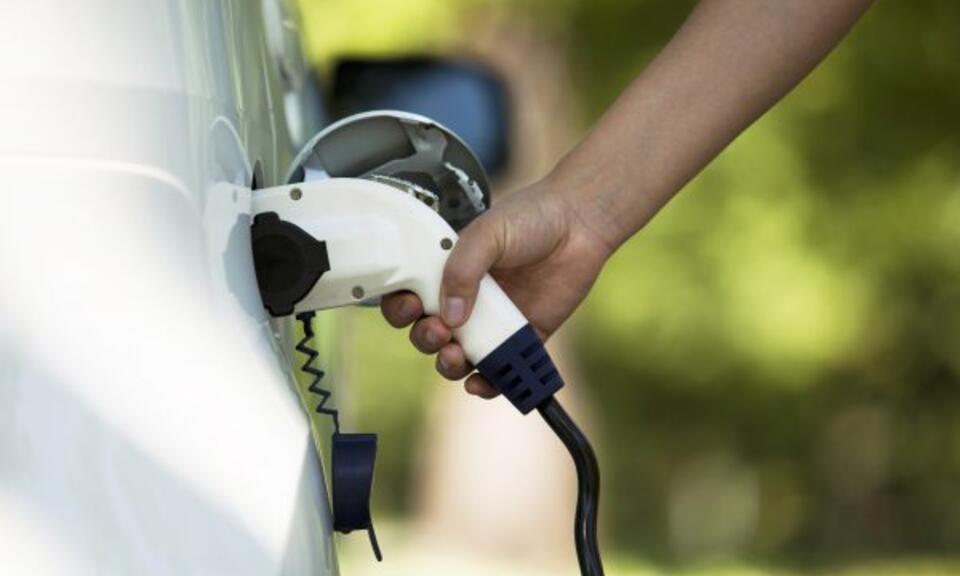
Published
Blog type
Dr Billy Wu
19 July 2017
Decarbonising transport and the electric grid has been a long sought after aspiration of many nations in order to reduce greenhouse gas emissions and reliance on oil and gas. Transport alone contributes to around 14% of the 49 GtCO2eq produced globally as estimated by the Intergovernmental Panel on Climate Change. Catalysed by this, electric vehicles (EVs) have in recent years emerged as a potential solution and as of 2015 1.3 million EVs were in use globally, representing a 67% average growth rate since 2012. Yet despite this rapid growth, EV sales still only make up a small proportion of the 90 million vehicles which are annually produced. Whilst commercialisation of EVs continues to grow, this is accompanied by a plethora of market analysis showing aggressive forecasted growth rates which attracts new investors and start-up companies alike. However, since Sony released the first lithium-ion battery in 1991 there have been many false dawns for the EV revolution, in part due to the misalignment between technology development and media hype. So, the question is: what is it that actually holds back innovations in EVs and specifically the battery which is at the heart of the vehicle?
A lithium-ion battery is made up of 2 main components (though there are others): the anode and the cathode which are the negative and positive halves of the battery respectively. The modern day lithium-ion battery was first demonstrated by Professor John Goodenough, who in 1979 championed the lithium cobalt oxide cathode material. Later in 1980, Professor Rachid Yazami demonstrated the graphite anode which was the other half of puzzle. Together, these innovations allowed Sony and Asahi Kasei to commercialise the technology in 1991. This origin story highlights one of the key challenges with the commercialisation of lithium-ion battery technology; innovations have a long incubation period to validate performance.
To appreciate this, the Joint Centre for Energy Storage Research in the US has defined a range of battery technology readiness levels (BTRL). At BTRL1 there is a material breakthrough. BTRL2 is then to figure out how these materials can be synthesized repeatedly. This can take upto 1-2 years. From there, BTRL3 is to take the material and make a small battery and validate it’s performance which can take 2-5 years. Once confident, BTRL4 then scales up this proof-of-concept cell and again validates its performance which is another 2-5 years. Finally, once validated, at BTRL5-6, material scale up is performed and battery packs are made for vehicles for real world testing. This can take upto 5-10 years. Therefore, full commercialisation can take anywhere from 10-22 years.
Despite these challenges, companies and governments are investing significant amounts into research and development of battery technologies. Globally: Samsung SDI, LG Chem, Panasonic and BYD are amongst the largest battery producers. Panasonic in particular are the key partners of Tesla and their gigafactory. Whilst there are also many smaller start-up companies, a key challenge is the high cost (often >$100M) in commercialising battery technology and the long incubation period before profitability is realised. Companies such as Samsung, LG Chem and Panasonic are able to absorb significant R&D costs however, this has been the failure point of many start-ups.
A notable example is A123 which was a spin-out from MIT who pioneered the lithium iron phosphate chemistry. Whilst, the core innovation was scientifically sound, they filed for bankruptcy in 2012 having being founded in 2001. The Chinese company, BYD, which was founded in 2002, also uses the same lithium iron phosphate chemistry however is currently the largest EV producer. This is in part due to the $435M subsidies BYD has received from the Chinese government. Many of China’s internal combustion engine vehicles do not currently meet emission standards to be sold in western markets and therefore China sees EVs as a means of increasing their automotive market penetration.
Noting that Professor John Goodenough’s original battery work was done in the University of Oxford, the UK has not managed to retain the value of this breakthrough significantly. To this end, the UK government have recently announced via the industrial strategy fund £246M for the Faraday Challenge to address the need to stimulate fundamental and applied research in batteries.
Whilst, the immediate focus is on decarbonising transport we must also not forget that the overall objective is carbonisation of the whole system. Analysis has shown that in heavily coal powered electrical grids, converting all vehicles in that region can actually cause more CO2 to be emitted as this merely shifts the problem. Thus, decarbonisation of the grid is also needed. Whilst, many have suggested lithium-ion batteries to also be the solution, the challenge of scale and safety become an issue. Therefore, for large scale and long duration storage needed to ingrate wind and solar, grid operators are turning to technologies such as redox flow batteries, thermal storage and compressed air storage.
Despite all uncertainties highlighted in this article, one thing is certain. Decarbonisation of transport and the grid is needed in order to avoid irreversible damage to the environment. Skeikh Yamani, the former Saudi oil minister summarised this elegantly by saying “The Stone Age came to an end, not because we had a lack of stones, and the oil age will come to an end not because we have a lack of oil”.
Dr. Billy Wu is a lecturer at Imperial College London in the Dyson School of Design Engineering where he works on additive manufacturing (3D printing) and electrochemical devices.
